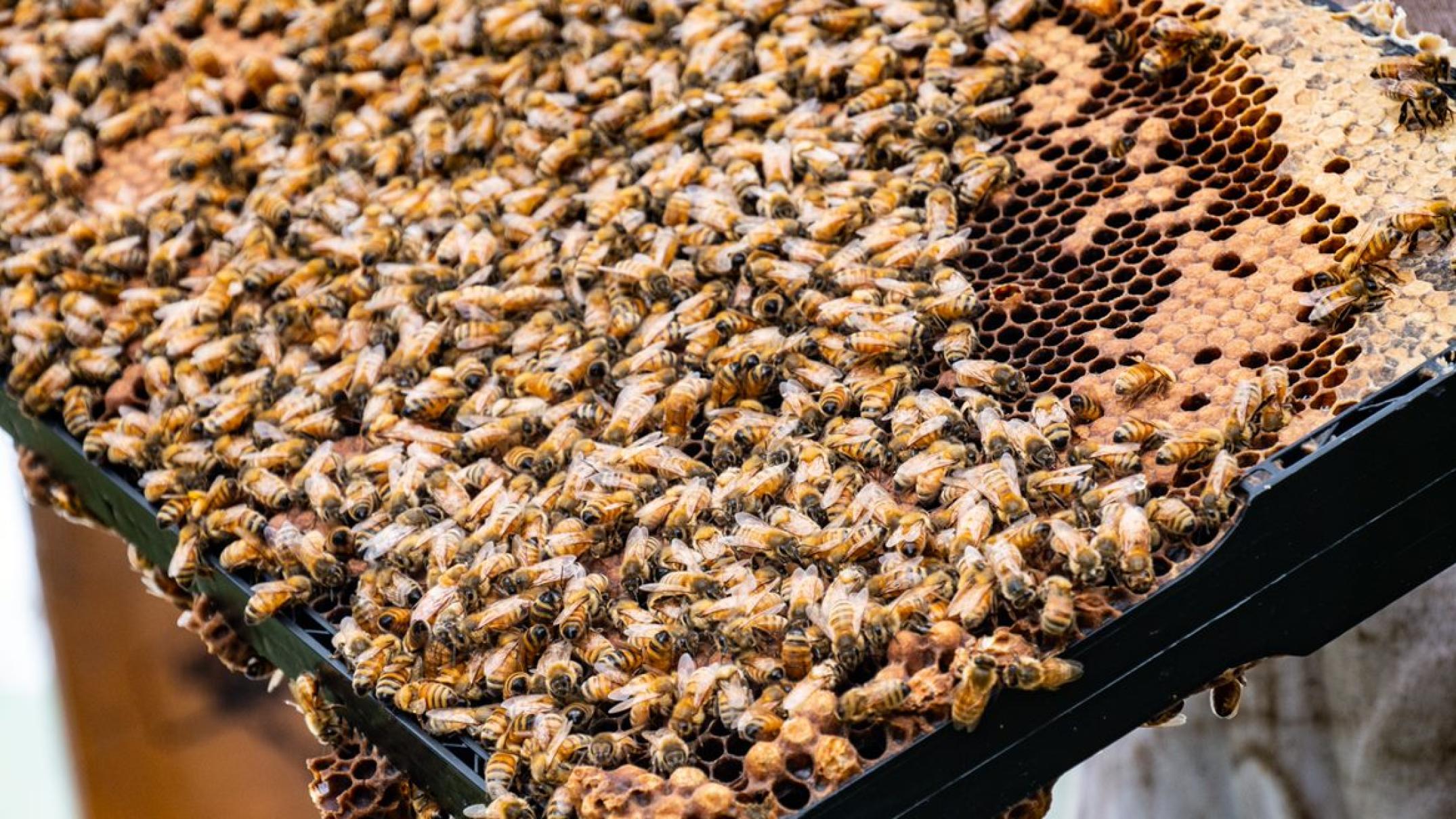They are the centre of every beehive but a shortage of queen bees across the country is making it difficult for beekeepers to rebuild and increase their hive numbers.
Key points:
- Queen bees are vital to beehives because they are the only bees capable of laying fertilised eggs
- If ageing queen bees can’t be replaced with younger ones, honey production decreases
- Demand for bee pollination services is putting additional pressure on beekeepers
While demand for beehives and pollination services continues to skyrocket, the number of commercial queen bee breeders in Australia has been dwindling over the past 20 years, leaving some beekeepers struggling to secure new queens.
A queen bee is vital to each beehive because it is the only bee capable of laying fertilised eggs.
While a young queen bee can lay up to 2,000 eggs a day and more than one million in her lifetime, her reproductive function declines with age.
Chair of the Australian Honey Bee Industry Council Trevor Weatherhead said there was a real need for more beekeepers to enter the queen bee breeding business.
“But if there are no younger queen bees to replace them with, then the honey production of the beekeeper will go down.”
Besides needing them for good honey production, young queen bees are also crucial for beekeepers wanting to increase their hive numbers.
President of the South Australian Apiarist Association Joshua Kennett said many beekeepers were looking for queens to re-establish their hives.
Dying art of queen bee breeding
Riverland beekeeper Kerry Chambers recently started queen bee rearing to expand her business and to support other beekeepers.
But she admitted that grafting queens wasn’t easy, and her first experience was nerve-wrecking.
“Grafting is the hardest part, you have to pull out a frame that has day-old larvae,” she said.
“You have to have good eyesight and a steady hand.”
But despite some challenges, she believed there were many benefits to rearing queens.
“Having queens is the way to expand your number of hives quickly,” Ms Chambers said.
“You can grab some frames from an existing hive, put it in a new hive and put a queen with them and then you have another colony straight away.
“I want to rear queens to have queens on hand if something happens to my established hives and I won’t have to lose any productivity, but also to help out other beekeepers.”
Mr Weatherhead, who has reared queen bees for 24 years, believed the precise time constraints and finicky work to graft bees was one reason stopping people from breeding queens.
“It’s very meticulous work that needs to be done in time.”
Pollination demand puts pressure on beekeepers
The requirement for more bees to pollinate newly planted fruit and nut trees for food production across the country is putting additional pressure on beekeepers to expand their hive numbers.
But Mr Kennett thought it also led to changing beekeeping practices because beehives needed to be very strong for pollination.
It is estimated that one third of crops in Australia were dependent on bee pollination.
Last year an estimated 227,000 beehives or more than 9 billion bees were being trucked into Victoria alone to pollinate almond trees.
Mr Kennett explained it meant many beekeepers were focusing on increasing hive numbers quickly.
“There is a lot more pollination going on, so we seem to be trying to change queens a bit more to make sure that queens in each hive are the best we can get.”




